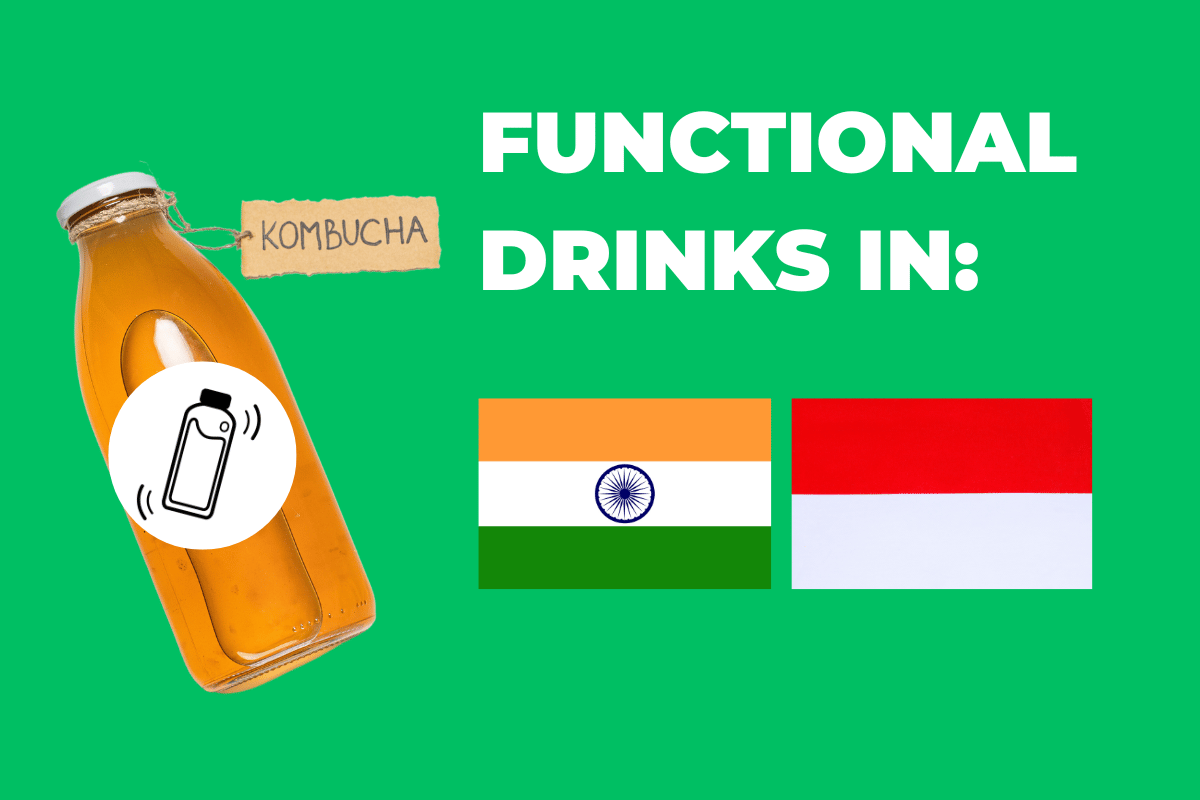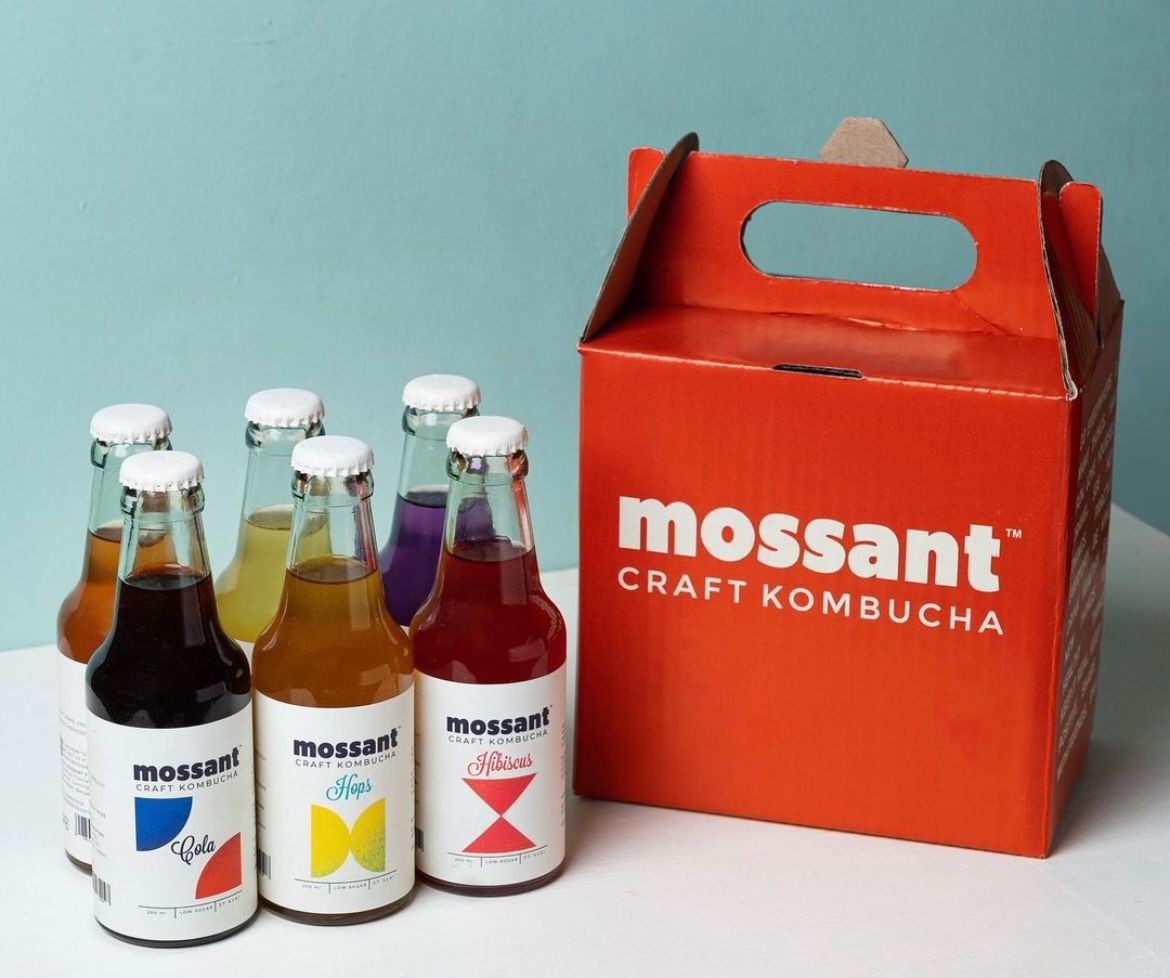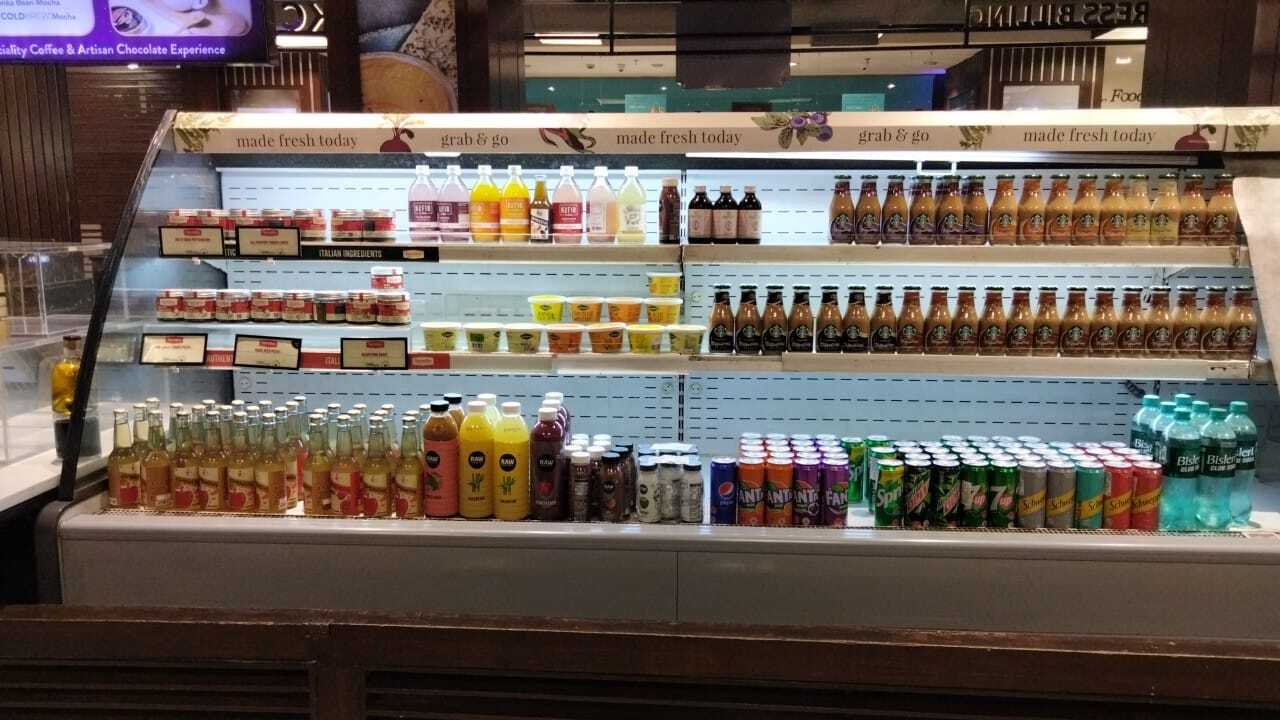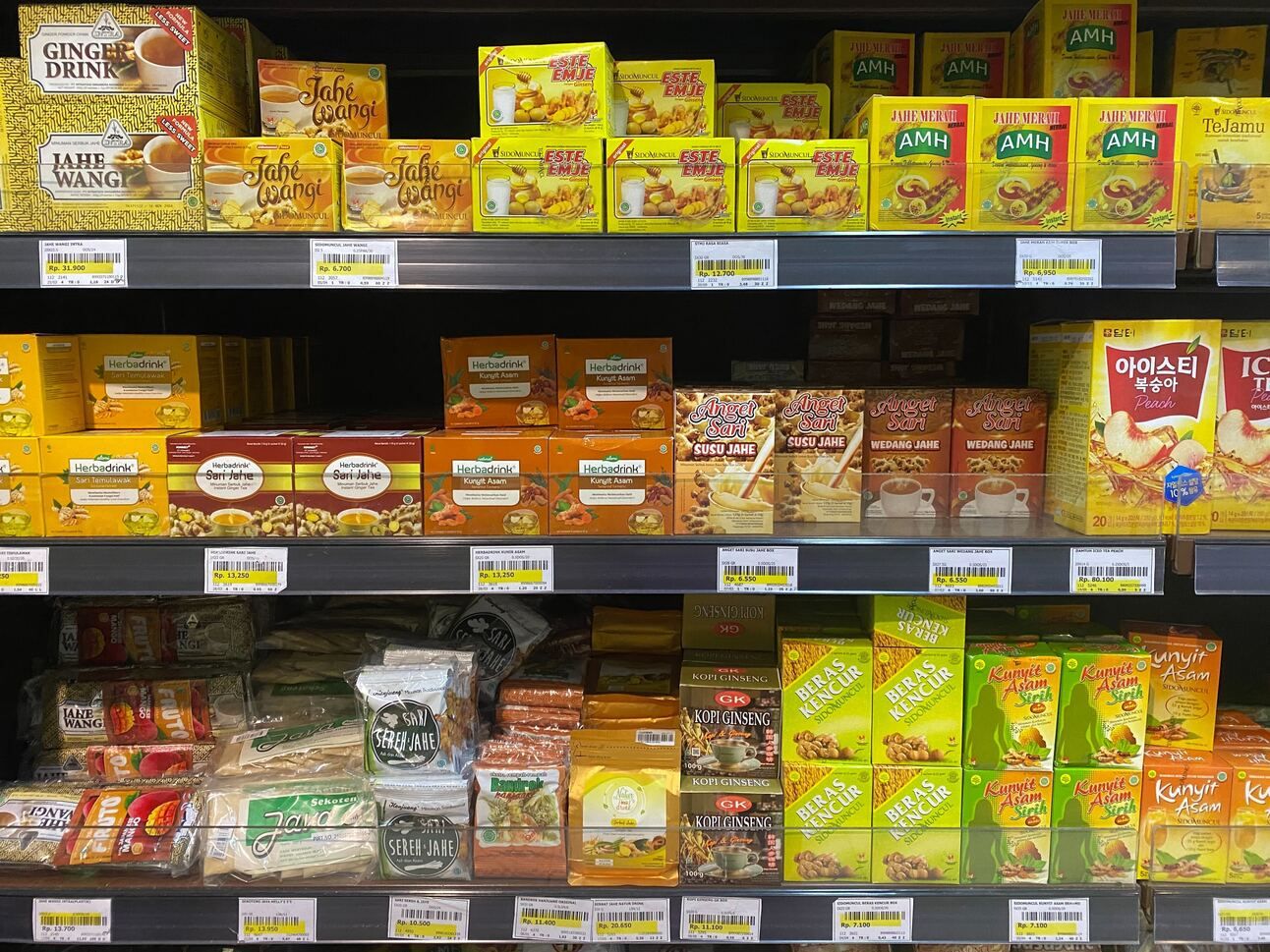About us: Market Shake is curated by GourmetPro. We help you unlock growth in F&B by matching you with local experts who have the skills and experiences to ensure your projects succeed. Explore our services.
Happy Tuesday Market Shakers. Today we go looking for functional drinks opportunities in two of the world’s most high-potential markets.
India and Indonesia are forecast to be the two fastest-growing top-20 economies for the next 5 years, according to the IMF. Their populations and the percentage of middle class are both growing. Amidst rising incomes and frenetic growth, consumers are starting to explore functional beverages.
More on the opportunities in these markets below.
Today:
In The News: Kirin’s future is functional, Israel says yes to PF dairy, inflation clearly hasn’t dented demand for candy, and more.
Trending with Gen Z: home-brewed water!? 💦
Innovation Deep Dive:
The Market For Functional Drinks in India
The Market For Functional Drinks in Indonesia
Key Takeaways

📰 In The News
A curation of our favorite F&B innovation stories from the week. Can be read in less than a 🧻 break.
Kirin acquires Australian vitamin company Blackmores for USD 1.2 billion to help grow its immunity-boosting product and functional drinks businesses.
Israel grants approval for sale of cow-free dairy for first time to Remilk, a company using precision fermentation to create milk proteins.
Angie Crone has been appointed official CEO of the Upcyled Foods Association, having served as interim since February 2022. Crone brings over a decade of experience implementing global programs related to sustainable agriculture, ethical sourcing, and food security for the CPG industry.
Hershey’s posts double-digit sales growth in the first quarter as consumers continue to demand snacks and candy they can consume at home. North American sales rose 11% YoY and international sales grew 19% YoY.
Nestle is facing pressure from investors to increase the proportion of revenues generated by ‘healthy’ foods after revealing that less than half of its food and drinks are considered healthy.
📱Trending with Gen-Z
What social media is telling us about Gen-Z’s cravings! Can be enjoyed during an 🛗 ride.
Flavored Water Frenzy. A growing number of TikTokers are going viral with flavored water recipes, or #watertoks - like this one. The trend sees people concocting cocktails of water and flavored syrups or sachets - often from candy brands like Nerds or beverage brands like Sunkissed and Kool-Aid. While not for everyone, consumer demand for water with a dash of “wow” offers an interesting category exploration and marketing opportunities for F&B brands.
🧉Innovation Deep Dive
Weekly deep dive into an F&B trend. Can be read in less than a 🚋 ride.
🇮🇳 The Market For Functional Drinks In India
Why Is India An Exciting Market?
India’s GDP has grown by 71% in the last decade, giving rise to a brash new consumer class. The nation’s 1.4 billion people are becoming better connected, with the economic boom paying for 10,000 km of new highway each year and widespread internet access. This adds up to new means of income and purchasing opportunities.
What’s more, India’s growth is just beginning. It stands to benefit greatly from trends like offshoring, digitalization, and the energy transition over the coming years.
All this growth is thirsty work and prudent players would do well to establish a spot in the market now, to be there as the population’s disposable income grows.
We sat down with GourmetPro expert Jay Mota to get the low down on the functional drinks market in India.
Expert Insights From

Jay, a versatile F&B professional, offers comprehensive advisory services through his firm, Atom Consultancy, leveraging his expertise in product development, marketing, branding, strategy, food science, and nutrition to help brands succeed in various markets. Find out how to work with Jay.
🥤 The Categories of Drink
What categories of functional drinks are emerging to dominate the market in India?
Jay Mota breaks the market up into the following leading categories, by order of size:
Electrolyte restoration (sports drinks like Gatorade, ORS)
Energy drinks (Red Bull, Sting, Monster)
High protein beverages (post and pre-workout beverages, sports nutrition),
Gut health (Pro and Prebiotics like Kombucha, fermented dairy drinks like kefir)
Meal replacement

📖 Quick history lesson: As in many markets, sports nutrition drinks were the first to emerge as a functional category in India. From 2015, demand for functional drinks began to grow beyond fitness fiends. The next promising categories to emerge have been probiotics, energy drinks, and beverages fortified with protein.
🏪 The Main Channels
The distribution landscape in India can be divided into six main channels, says Jay.
Online there are large marketplaces like Amazon & Flipkart, which serve the majority of India’s sprawling population. There are also smaller category-specific marketplaces and then D2C websites.
Physical channels are dominated by over 13 million small retail stores (Kirana Stores). Think 200 square meter stores stocking roughly 1000 SKUs each. This often-overlooked channel is starting to be recognized for its potential to move major volumes. For example, Pepsi Co. recently launched an affordable competitor to Red Bull, Sting, and achieved nationwide penetration through this channel. Most of the population shops from the “general trade” store format which is so widespread in India.

Then there are larger supermarkets. These mainly service India’s most wealthy consumers. However, in recent times value-first supermarkets like D-Mart have opened the gates for the masses of India to shop from supermarkets. The modern trade market is just beginning to scale rapidly across the country with regional players offering great value to their customers.
The final physical channel is quick commerce. Services like Swiggy and Zomato, which deliver products within 10 minutes, are reshaping India’s retail landscape. According to Jay, they have provided independent startups with a never-before-known level of access to India’s population of consumers. In turn, they provide consumers with the next level of convenience: near-instant access to healthy, fresh products delivered straight to their doors in less than 10 minutes. It's a habit-forming channel that is leveling the playing field for a lot of new brands in the country.
Like what you’re reading?
💪 In Demand Benefits
Geography and socioeconomics have helped shape the kind of benefits consumers in India demand.
The Indian population faces a protein deficiency, with 80% of the population not meeting the recommended daily amount. The government and media have increasingly paid attention to this issue, and there is now a growing demand for beverages enriched with additional protein.
What’s more, protein is increasingly being added to beverages beyond the traditional sports nutrition category. India’s largest dairy company, Amul, recently launched the nation’s first tetra pack protein lassi (a sweet yogurt drink), for example. Localizing innovations with global trends makes them more accessible and acceptable to the masses of the country.
India’s hot climate has also created a natural demand for beverages that boast an extra powerful hydration boost. Sports drinks with added electrolytes and vitamins are therefore popular.
India has not missed out on the global consumer trend towards health and immunity-boosting products either. These products are mostly premium and sought after by young working-age consumers, a group that accounts for over 50% of India’s population.
💁 Consumer Profile
You can split India’s population (roughly) in two.
The top 1-2% most wealthy citizens are highly educated, fluent in English, and influenced by emerging trends in developed economies. These consumers have money to spend and are already putting it towards vitamin shots and imported probiotics, like Yakult. A small number may even dabble in nootropics. Premium and luxurious functional products can do wonders in this space.
65% of the population is mostly under 35s. They are working age and have disposable income. They can be influenced now by new-age products that provide functional benefits and improve their quality of life, whether it be through an energy drink in the middle of the day or a gut health beverage to improve their overall health.
🇮🇩 The Market For Functional Drinks In Indonesia
Why Is Indonesia An Exciting Market?
Indonesia has become an extremely significant global market.
Over the past decade, Indonesia’s GDP has grown by 52%. This is set to continue thanks to Indonesia’s vast supplies of in-demand commodities like nickel, which are important for the Green Energy Transition. The country is investing heavily in infrastructure to grease the wheels for even more growth, having built 18 ports, 21 airports, and 1,700km of toll roads since 2014.
In short: opportunities abound and players looking for growth should take note. That includes functional drinks brands. In fact, a market is already emerging and consumers are showing strong preferences for specific categories and benefits.
We sat down with GourmetPro expert Tassa Agustriana to get the low down on the functional drinks market in Indonesia.
Expert Insights From:

With over 14 years of experience in the F&B industry, Tassa excels at sourcing specialty ingredients, managing product development. She founded Thrive Food Consulting and offers consulting services for local and international businesses. Her expertise includes alternative sweeteners, specialty beverages, and product compliance standards. Find out how to work with Tassa.
🥤 Top Categories of Functional Drink
What are the main categories of functional drinks in the Indonesian market right now?
There are two broad categories of functional drinks in Indonesia. The first is traditional herbal remedies and the second is modern categories such as wellness and sports drinks.
Jamu
An ancient elixir, Jamu has been brewed in Indonesia for centuries. Every family makes it in a slightly different way, for slightly different reasons.
The potion, often composed of potent herbs and spices such as turmeric and ginger, is a kind of cure-all. Different Jamu are taken to cure colds, boost immunity, relieve menstrual cramps, promote fertility, and more.
These once-traditional home remedies have been commercialized by CPG brands such as Sido Muncul.
Recent Categories

Aside from traditional drinks, there are 3 main categories of beverages that have risen to functional fame in Indonesia.
Wellness/ Beauty drinks - one of the earliest categories of functional drinks to emerge in the modern Indonesian market was drinks with beauty benefits. Ingredients like collagen have been added to vitamin-packed wellness drinks to keep skin looking young and healthy.
Slimming drinks - beverages packed with ingredients like psyllium husk, Zinc, and probiotics are becoming popular in Indonesia. The main pull for such drinks is their slimming properties, with many purporting to keep you fuller for longer.
Sports drinks - products that restore electrolytes and energy during exercise are also a big category in Indonesia.
🏪 The Main Channels
So, where are Indonesian consumers going to quench their thirst for these beverages?

Jamu is sold mainly in traditional, small-scale channels like wet markets, convenience stores, or dedicated stands. Wellness and beauty drinks, in a sachet or RTD format, are sold online and in drug stores and convenience stores. The same goes for slimming drinks and sports drinks.
Share inspiration with your friends and colleagues:
💪 In-Demand Benefits
The Indonesian market is currently focused on health and beauty.
On the health side, consumers want immunity boosts. For these, they turn to Jamu and wellness drinks. There’s also demand for products that can restore electrolytes and keep you energized during workouts or work.
Beverages with beautifying benefits are a rapidly growing category. Many Indonesian consumers, especially younger generations, want the same glowing, white skin sported by the South Korean and Japanese pop idols who are popular there. And so, drinks enriched with ingredients like collagen are booming right now, according to Tassa.
A white space - and one that will be tough to crack - is nootropics. There is not yet demand for drinks that support your mental health and focus. This is an aspect of health that is still not familiar or widely discussed in Indonesia. According to Tassa, beyond awareness, many ingredients used in functional drinks with brain benefits are unfamiliar to the Indonesian FDA so they also pose a regulatory challenge.
💁 Consumer Profile
What kind of consumers are thirsting for functional beverages in Indonesia? According to Tassa, you can think of Indonesian consumers in three broad categories.
Older generations: Consumers aged 50+. They mainly look to Jamu for functional benefits, as they have done since childhood.
30s - 50s: The ’80s and 90s kids have a sweet tooth for sports and energy drinks, such as local brand Extra Joss. It's common to buy a few weeks’ supply of sachets online, as well as RTDs. This age group is also consuming slimming drinks to maintain a healthy weight as desk work becomes more common.
Younger generations: Consumers in their teens and twenties have grown up alongside Indonesia’s thriving e-commerce platforms like Tokopedia, and are used to shopping online. This generation cannot get enough of drinks with skin-boosting benefits, like byt Colla, slimming drinks, like Flimty, and energy drinks such as Red Bull.
🤯 Key Insights
Short on time? Here’s three things to take away from Jay and Tassa’s insight-rich market overviews.
Tricky Traditional Drinks - herbal drinks and tonics have long been used for their functional benefits across APAC. The same is true in India and Indonesia. Companies that don’t take the time to properly understand the role of traditional drinks in the local markets will pay the price.
In India for example, turmeric spiced milk has long been consumed as a cure for childhood illnesses. The same childhood remedy is being lapped up by consumers in the US as a trendy inflammation-fighting latte, Golden Milk. It’s easy to imagine the response to the launch of such a product in India, where it has a very different image, would be much less enthusiastic.
India and Indonesia are still nascent markets for functional drinks. They are several years behind markets like the US. The categories that are popular now are sports drinks, energy drinks, wellness drinks, and dairy. The focus is currently on physical rather than mental health benefits.
Understanding the production and distribution landscape is essential. Additional costs associated with importing and selling functional drinks in these markets may mean you price out most of the consumers there. Instead, strategies like establishing your own manufacturing presence will help you keep product costs down to access a broader segment of consumers. Equally, understanding the rapidly evolving distribution channels and structures in each country is key to achieving significant volumes.
Looking to expand your presence in APAC Markets?
Quickly scale your team with local Pros like Jay and Tassa who have the passion, skills, and experiences you need to unlock growth in Indian and Indonesian markets.
That’s all folks
Thanks for reading today’s newsletter.
Share your ideas for how we can improve with this 30-second, anonymous, 2-question survey:
See you next week as we round off this series by taking a look at what’s in store for the future of functional beverages.
Made with ❤️ by GourmetPro - your network of Food & Beverage experts, on demand.
💌 If you have any questions, you can directly answer this email. We read and answer all messages.
💖 And if you think someone you know might be interested in this edition of Market Shake, feel free to simply forward this email or click the button below. 💖
